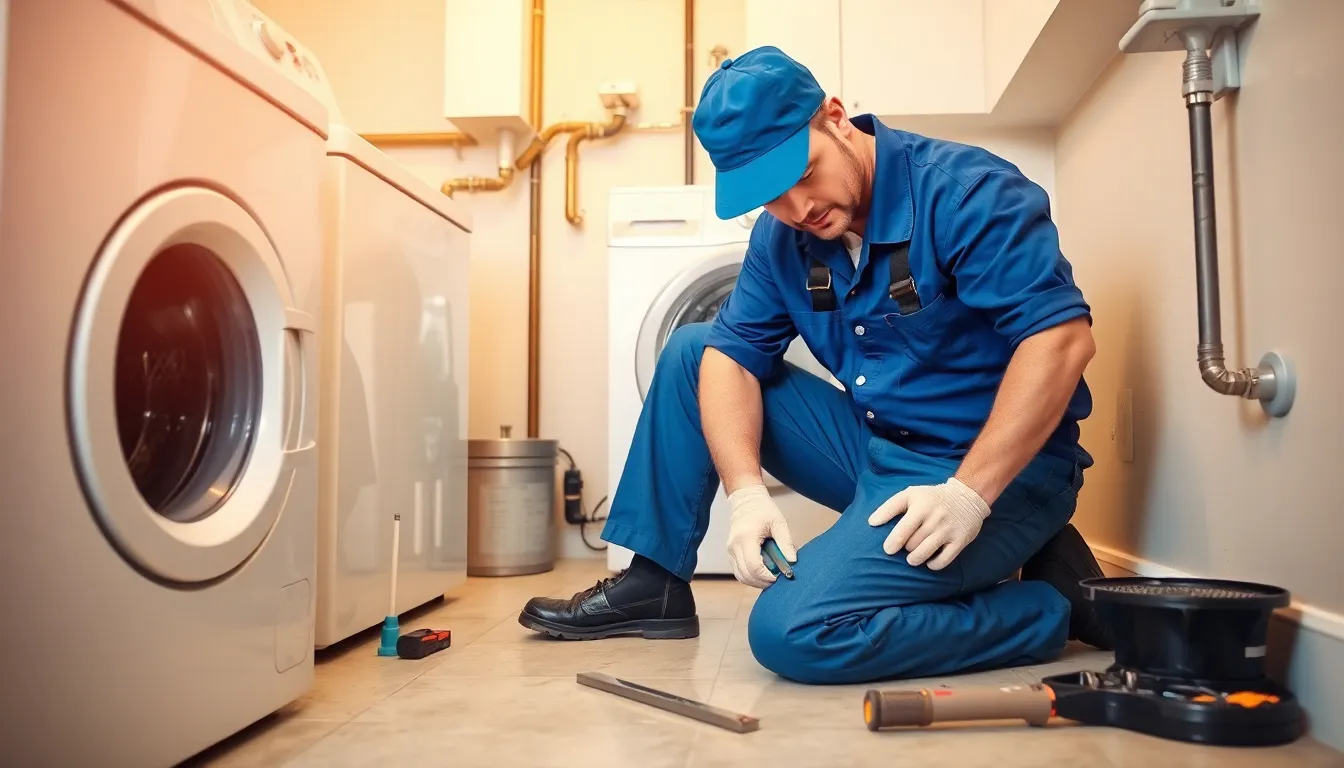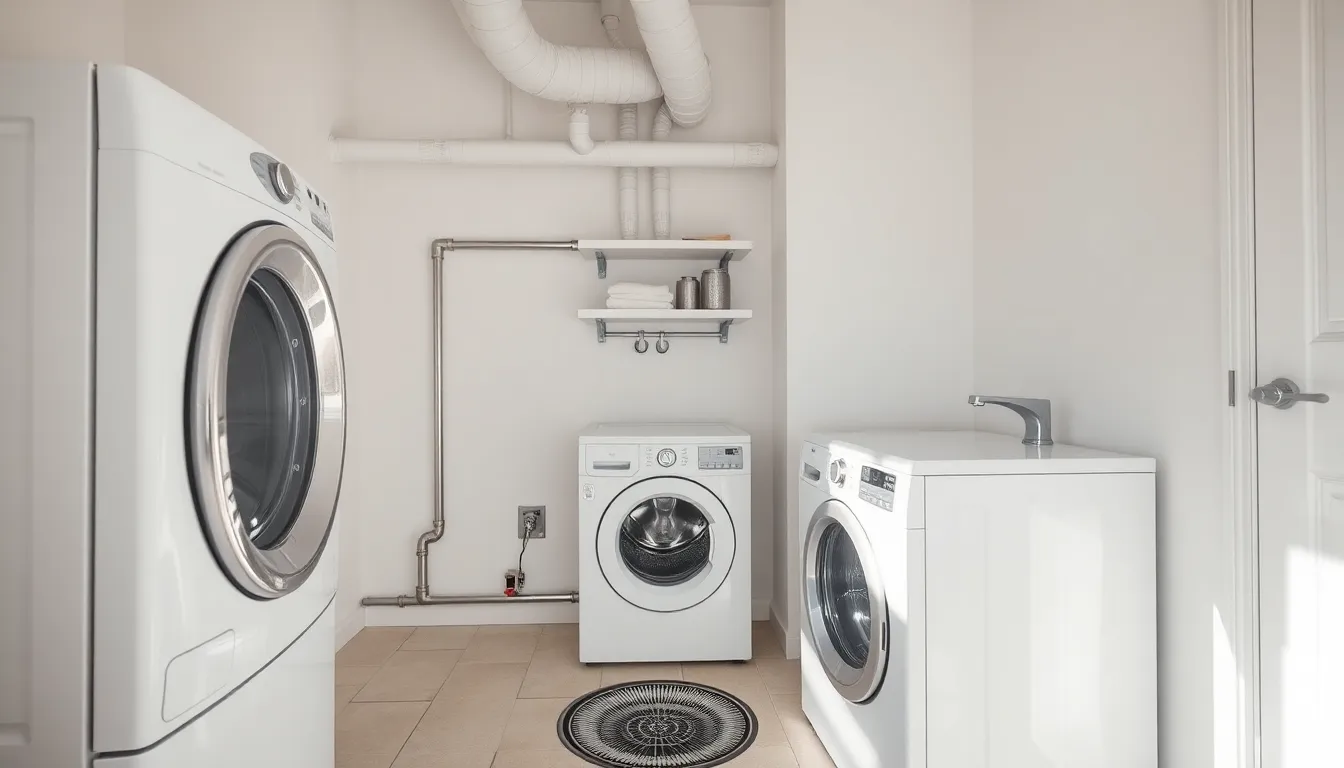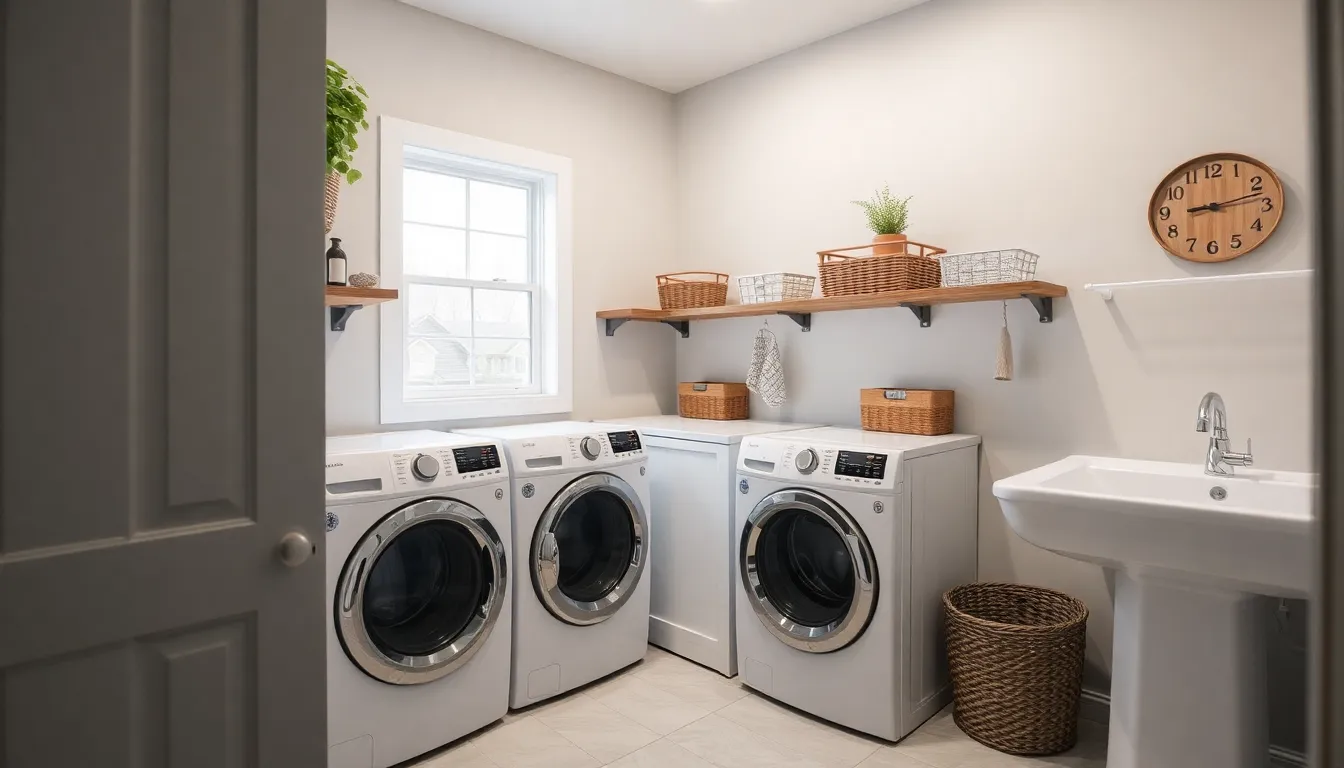Although, the laundry room may not be the most thought about, we can all agree that it is super important in daily life. Imagine the fresh scent of clean laundry filling your home, but before that blissful moment, you’ll need to tackle the plumbing requirements for a laundry room remodel. Getting the plumbing right is essential for both functionality and efficiency.
From ensuring proper drainage to accommodating water supply lines, every detail matters. Understanding these plumbing essentials can make all the difference. Dive into the world of laundry room renovations and discover how to create a seamless blend of style and practicality.
Overview of Plumbing Requirements
Proper plumbing is essential for an efficient laundry room remodel. Key considerations include:
- Water Supply Lines
Water supply lines must connect to the washing machine and may need adjustments based on appliance specifications. Homeowners ensure these lines accommodate both hot and cold water connections for improved functionality.
- Drainage System
An effective drainage system prevents water buildup and handles wastewater. Installing a standpipe and using a trap are crucial for proper drainage. Homeowners address potential issues with clogs or backups through careful pipe installation and slope adjustments.
- Ventilation
Venting helps to remove humidity and odors from the laundry room. Proper venting reduces condensation and prevents mold growth. It’s important to position vents according to local building codes for optimal airflow.
- Gas Line Services
If a gas dryer is used, proper gas line installation is vital. Certified professionals should handle gas line services to ensure safety and compliance with regulations.
- Code Compliance
Local plumbing codes govern installation practices. Homeowners verify compliance to avoid penalties and ensure functionality. Consultation with a licensed plumber helps navigate these requirements effectively.
- Water Heater Considerations
If the remodel involves a water heater, proper sizing and placement matter. The correct water heater type ensures sufficient hot water supply for laundry tasks.
Addressing these plumbing requirements lays the foundation for a successful laundry room remodel, enhancing both efficiency and convenience for daily use.
Essential Plumbing Components

Plumbing plays a critical role in any laundry room remodel, influencing functionality and efficiency. Key components include water supply lines and drainage systems.
Water Supply Lines
Water supply lines deliver hot and cold water to washing machines. These lines must be correctly sized and installed to ensure optimal pressure and flow.
Typically, the hot water line connects to a standard ½-inch pipe, while the cold water line may also use a ½-inch diameter. It’s essential to install shut-off valves on each line to provide easy access for maintenance and emergency shut-off. Depending on the layout, a reliable connection to the home’s existing plumbing may require pipe branching or rerouting.
Drainage Systems
Drainage systems remove wastewater from the washing machine efficiently. Installing a drain with a trap prevents odors from entering the laundry space. Drain lines often require a diameter of at least 2 inches to accommodate proper drainage.
It’s vital to maintain a consistent downward slope of ¼ inch per foot to facilitate proper flow. Additionally, ensuring connections to existing plumbing systems comply with local building codes maintains safety and functionality while avoiding penalties.
Key Considerations for Remodeling
When remodeling a laundry room, several plumbing considerations must guide the project. These considerations ensure functionality, efficiency, and adherence to safety standards.
Location and Layout
Location influences plumbing efficiency in a laundry room. Positioning the washer and dryer close to existing water supply lines saves time and minimizes installation costs. Ensuring access to a nearby drainage system prevents water buildup, promoting smooth operation. The ideal layout accommodates sufficient space for appliances while maintaining practicality. It’s essential to leave room for any future repairs or servicing, facilitating straightforward access to plumbing components.
Local Building Codes
Local building codes define the plumbing standards required during a laundry room remodel. Compliance with these codes ensures safe and efficient plumbing installations. Codes often include requirements for drain sizes, vent installations, and water supply line specifications. Understanding and adhering to these codes prevents potential penalties and ensures the plumbing setup meets local safety regulations. Engaging a professional familiar with local regulations reinforces compliance and promotes quality plumbing service.
Common Plumbing Challenges

Addressing common plumbing challenges ensures a successful laundry room remodel.
- Drainage Issues
Drainage problems often result from clogs in pipes, requiring regular inspection. Ensuring a minimum 2-inch diameter drain line with the correct slope prevents water buildup.
- Inadequate Water Supply
Insufficient water supply can hinder appliance performance. Water supply lines should ideally use ½-inch pipes for both hot and cold water, including shut-off valves for maintenance.
- Incorrect Ventilation
Poor ventilation can lead to mold growth and unpleasant odors. Proper installation of vents reduces humidity levels and maintains a fresh environment.
- Gas Line Challenges
For homes with gas dryers, gas line installation poses safety risks. Secure connections and compliance with local codes are crucial for safe operations.
- Code Compliance
Non-compliance with local plumbing codes can result in penalties. All plumbing installations must adhere to established standards to guarantee functionality and safety.
- Water Heater Placement
Water heater sizing and placement affect hot water supply efficiency. Correct positioning accommodates optimal access and maintenance.
- Pipe Integrity
Older pipes may corrode or leak, leading to significant issues. Regular assessments and timely pipe replacement services enhance system reliability.
Addressing these challenges effectively supports a smooth remodeling process and robust plumbing performance in laundry rooms.
Cost Estimates for Plumbing
Cost estimates for plumbing in a laundry room remodel depend on various factors, including materials, labor, and the complexity of the job.
Service Call Fees
Service calls typically incur a fee of $85, which includes an initial assessment by a plumbing professional.
Water Heater Replacement Costs
Water heater replacement costs vary based on tank size. Here are the estimated prices:
| Tank Size | Estimated Cost |
|---|---|
| 30 Gallon Tank | $1,500 |
| 40 Gallon Tank | $1,600 |
| 50 Gallon Tank | $1,800 |
Material and Installation Costs
Plumbing material costs such as pipes, valves, and fittings also contribute to overall expenses. Standard sizes include:
- ½-inch pipes for hot and cold water supply lines.
- 2-inch diameter drain lines for effective wastewater removal.
Installation labor costs may differ based on local rates and job complexity. High-quality plumbing services often require skilled professionals, ensuring compliance with local codes.
Additional Considerations
Engaging a plumber familiar with local code requirements can prevent costly mistakes. Cost assessments may include specifics about drainage systems and water supply placements based on appliance layouts.
Overall, accurate cost estimates require thorough discussion with a qualified plumbing service to ensure all needs are met efficiently.
Conclusion
A well-planned plumbing layout is essential for a successful laundry room remodel. By ensuring proper water supply and drainage systems homeowners can enhance the functionality and efficiency of this vital space. Paying attention to local building codes not only promotes safety but also helps avoid costly mistakes down the line.
Engaging a professional plumber with experience in laundry room renovations can streamline the process and guarantee compliance with all necessary regulations. With the right approach to plumbing requirements homeowners can create a stylish and practical laundry area that meets their needs for years to come.
Frequently Asked Questions
Why is plumbing important in a laundry room remodel?
Proper plumbing is crucial for functionality and efficiency in a laundry room. It involves connecting water supply lines for hot and cold water, ensuring effective drainage to prevent water buildup, and providing proper ventilation to manage humidity and odors.
What are the key plumbing requirements for a laundry room?
Key plumbing requirements include installing water supply lines with shut-off valves, having a drainage system with a minimum 2-inch diameter drain line, and ensuring all plumbing connections comply with local building codes for safety.
How should I layout appliances for plumbing efficiency?
To maximize plumbing efficiency, position the washer and dryer close to existing water supply lines. This arrangement minimizes installation costs and establishes easy access to drainage systems, preventing potential water buildup.
What are common plumbing challenges in laundry room remodels?
Common challenges include drainage issues from clogs, inadequate water supply impacting appliance performance, and improper ventilation causing mold and odors. These problems can be mitigated with careful planning and compliance with local codes.
How does water heater placement affect my laundry room?
Water heater placement can significantly influence hot water supply efficiency. Adequate positioning ensures quick access to hot water for laundry tasks, which is essential for convenience and to meet household needs.
What costs should I consider for plumbing in a remodel?
Consider costs for materials, labor, and job complexity in your plumbing budget. Service call fees generally start at $85, while water heater replacement can range from $1,500 for a 30-gallon tank to $1,800 for a 50-gallon tank.
Why is compliance with local plumbing codes important?
Compliance with local plumbing codes is essential to ensure safety and functionality in installations. Non-compliance can result in penalties, safety hazards, and costly mistakes, emphasizing the need for professional guidance.
Should I hire a professional plumber for my remodel?
Yes, hiring a professional plumber is highly recommended. They are familiar with local code requirements and can ensure quality service, preventing common pitfalls and ensuring efficient installations for your laundry room remodel.

